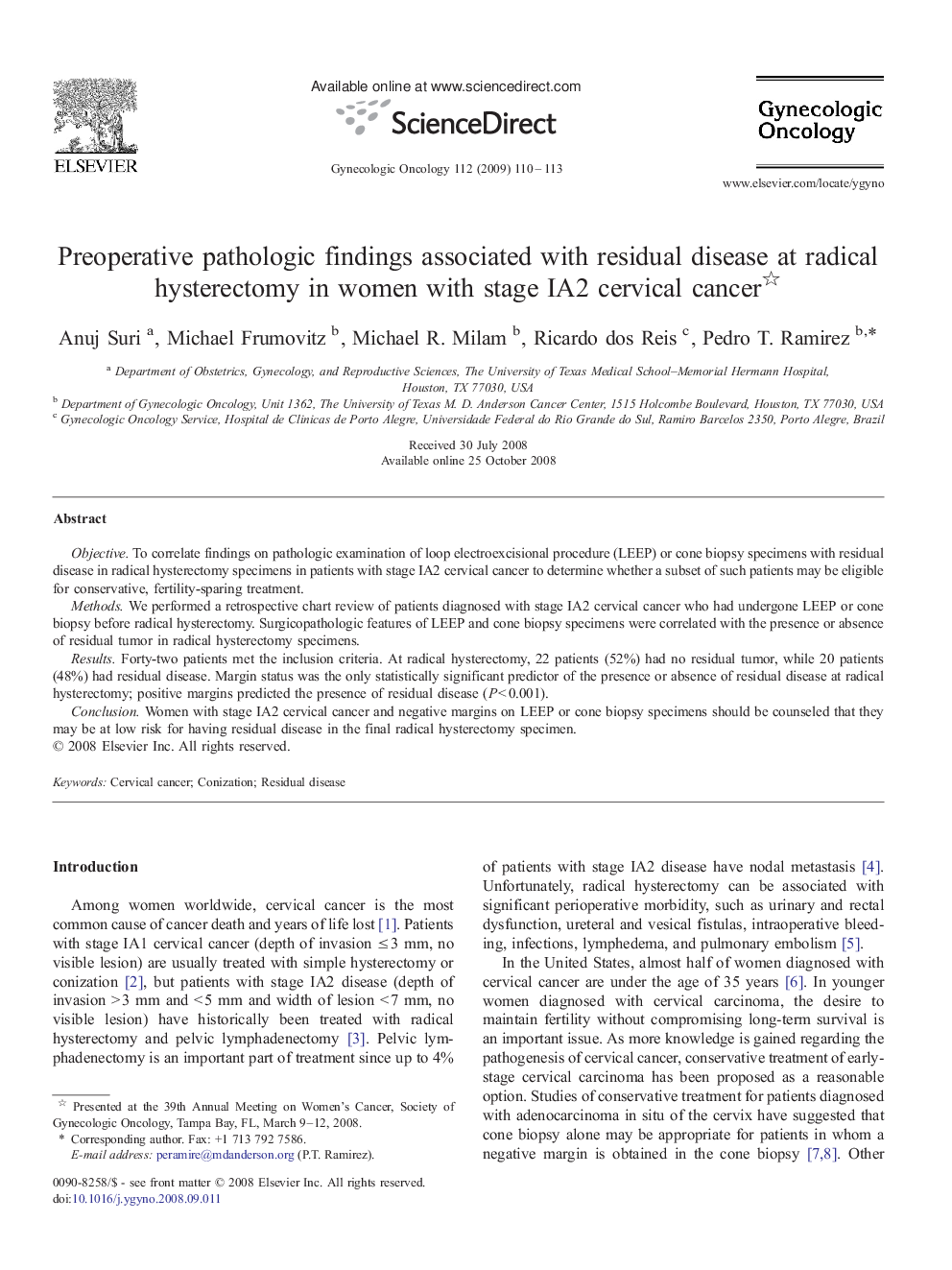| Article ID | Journal | Published Year | Pages | File Type |
|---|---|---|---|---|
| 3947435 | Gynecologic Oncology | 2009 | 4 Pages |
ObjectiveTo correlate findings on pathologic examination of loop electroexcisional procedure (LEEP) or cone biopsy specimens with residual disease in radical hysterectomy specimens in patients with stage IA2 cervical cancer to determine whether a subset of such patients may be eligible for conservative, fertility-sparing treatment.MethodsWe performed a retrospective chart review of patients diagnosed with stage IA2 cervical cancer who had undergone LEEP or cone biopsy before radical hysterectomy. Surgicopathologic features of LEEP and cone biopsy specimens were correlated with the presence or absence of residual tumor in radical hysterectomy specimens.ResultsForty-two patients met the inclusion criteria. At radical hysterectomy, 22 patients (52%) had no residual tumor, while 20 patients (48%) had residual disease. Margin status was the only statistically significant predictor of the presence or absence of residual disease at radical hysterectomy; positive margins predicted the presence of residual disease (P < 0.001).ConclusionWomen with stage IA2 cervical cancer and negative margins on LEEP or cone biopsy specimens should be counseled that they may be at low risk for having residual disease in the final radical hysterectomy specimen.
